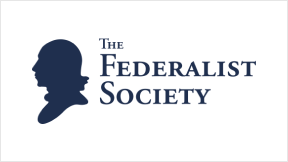Facts of the Case
In 1879, Connecticut passed a law that banned the use of any drug, medical device, or other instrument in furthering contraception. A gynecologist at the Yale School of Medicine, C. Lee Buxton, opened a birth control clinic in New Haven in conjunction with Estelle Griswold, who was the head of Planned Parenthood in Connecticut. They were arrested and convicted of violating the law, and their convictions were affirmed by higher state courts. Their plan was to use the clinic to challenge the constitutionality of the statute under the Fourteenth Amendment before the Supreme Court.
Questions
Does the Constitution protect the right of marital privacy against state restrictions on a couple's ability to be counseled in the use of contraceptives?
Conclusions
-
A right to privacy can be inferred from several amendments in the Bill of Rights, and this right prevents states from making the use of contraception by married couples illegal.
In a 7-2 decision authored by Justice Douglas, the Court ruled that the Constitution did in fact protect the right of marital privacy against state restrictions on contraception. While the Court explained that the Constitution does not explicitly protect a general right to privacy, the various guarantees within the Bill of Rights create penumbras, or zones, that establish a right to privacy. Together, the First, Third, Fourth, and Ninth Amendments create the right to privacy in marital relations. The Connecticut statute conflicted with the exercise of this right and was therefore held null and void.
Justice Goldberg, joined by Justices Warren and Brennan, concurred. Rather than finding that the right to privacy was contained in imaginary penumbras, Goldberg located it in the Ninth and Fourteenth Amendments.
Justice Harlan concurred, arguing that the Due Process Clause of the Fourteenth Amendment protects the right to privacy.
Justice White concurred, arguing that the Fourteenth Amendment was the proper basis for the decision.
Justice Black, joined by Justice Stewart, dissented. Unpersuaded by the loose reasoning of the majority, Black felt that there was no way to infer that the Constitution contained a right to privacy. He also dismissed the views of the concurrences that it could be found in the Ninth and Fourteenth Amendments.
Justice Stewart, joined by Justice Black, filed a separate dissenting opinion. Stewart argued that despite his personal view that the law was "uncommonly silly," he felt that the Court had no choice but to find it constitutional.
"Uncommonly Silly"—and Correctly Decided: The Right and Wrong of Griswold v. Connecticut and Why It Matters Today
It is one of the Supreme Court’s most consequential and controversial decisions, and no one should...
Roe v. Wade: A Legal History | Part Two: The Right to Privacy
Documentary short from Coronation Media and FedSoc Films
Though it is not explicitly mentioned in the Constitution, the concept of a fundamental right...
Roe v. Wade: The Power of a Law Review [Short Film]
Documentary short from Coronation Media and FedSoc Films
How did a law review article impact one of the most famous cases in Supreme...
Roe v. Wade: A Legal History | Part One: To the Court
Documentary short from Coronation Media and FedSoc Films
As one of the most consequential decisions in the history of the Supreme Court, Roe...
Abortion and the Courts
Online Debate
The Supreme Court has upheld the constitutionality of the Partial-Birth Abortion Ban Act, passed by...
Author Response: More on Judicial Impartiality
I concur wholeheartedly with Evan Bernick’s thesis, written in response to my recent blog, “Trump...
Which Rights Are We Mediating?
Federalist Society Review, Volume 21
A review of How Rights Went Wrong: Why Our Obsession With Rights Is Tearing America...
What Happened to Natural Law in American Jurisprudence?
Federalist Society Review, Volume 22
A Review of The Decline of Natural Law: How American Lawyers Once Used Natural Law and...
The Great Debate: Judge Robert H. Bork - November 18, 1985
Speech by Judge Robert H. Bork at the University of San Diego Law School on November 18, 1985
Judge Robert H. Bork United States Court of Appeals for the District of Columbia Before...
Exceptionalism
Oddly, a smidgen of a statement by the President back in 2009, made on the...
Blind to Text, Unfaithful to Principle
Federalism & Separation of Powers Practice Group Newsletter - Volume 1, Issue 1, Fall 1996
The most significant decision involving federalism that was handed down during the October 1995 Term--indeed,...
Principles of State Constitutional Interpretation
Federalist Society Review, Volume 23
State constitutionalism—the practice of state courts deciding cases on independent state constitutional grounds—is a vital...
Book Review: Cosmic Constitutional Theory: Why Americans Are Losing Their Inalienable Right to Self-Governance
Engage Volume 14, Issue 2 July 2013
Other Reviews of Cosmic Constitutional Theory: •Marc O. Degirolami, The New Republic, Sept. 2012: http://www.newrepublic.com/book/review/cosmic-constitutional-theory-judicial-restraint...
Book Review: The Right to Try
Engage, Volume 17, Issue 1
Note from the Editor: This book review discusses the controversial concept of the constitutional “right...
Perry, Same-Sex Marriage, and Federal Constitutional Guarantees
Engage Volume 12, Issue 3, November 2011
Note from the Editor: This article and the article in this issue by George W....
Conservative & Libertarian Legal Scholarship: Constitutional Law
V. Constitutional Law
[Return to Table of Contents] V. Constitutional Law Note: The Heritage Foundation has published a...
The Workplace as a Front Line in the War Against Terrorism
The Federalist Society takes no position on particular legal or public policy initiatives. All expressions...
2005 National Lawyers Convention
Originalism
The Mayflower Hotel1127 Connecticut Avenue, NW
Washington, DC 20036





![Click to play: Roe v. Wade: The Power of a Law Review [Short Film]](https://img.youtube.com/vi/tIe-Rj_2yB8/mqdefault.jpg)








